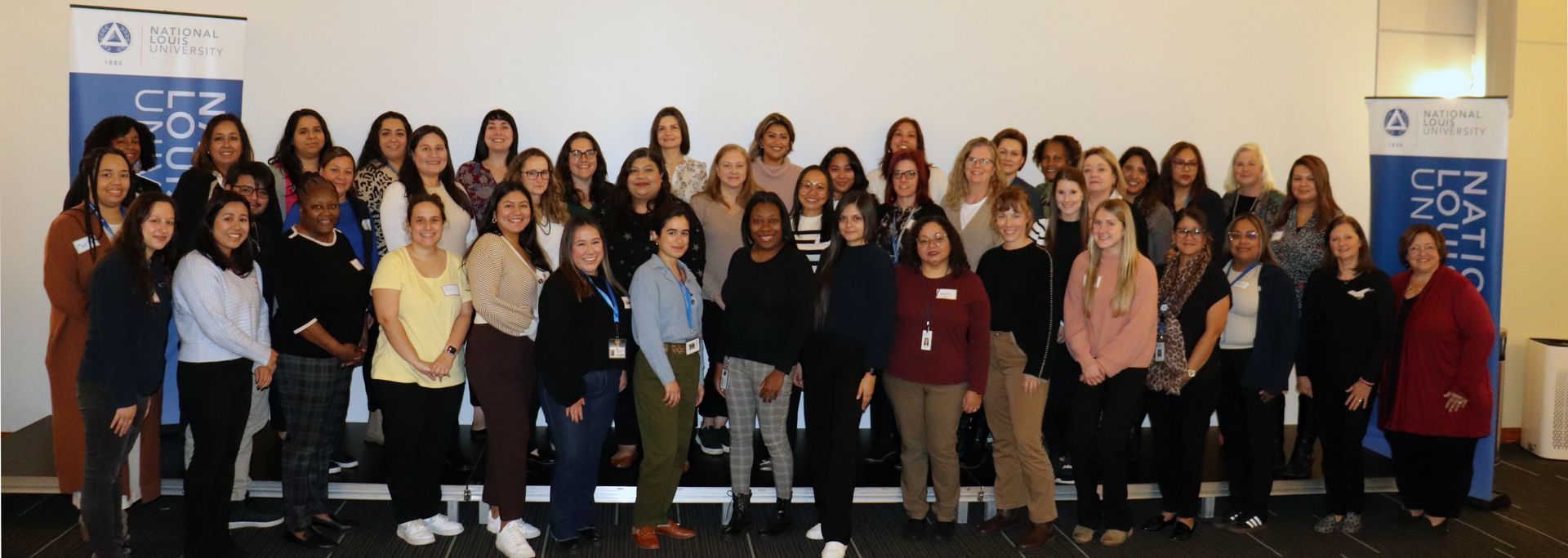BY Tarah Kadzielawski | February 8, 2015
This document may be printed, photocopied, and disseminated freely with attribution. All content is the property of the McCormick Center for Early Childhood Leadership.
Editor’s Note: This is part 1 of a two-part series. Read Part 2 here.
When I think about advocacy I have images of talking to politicians, trying to convince them to push through or support some policy. It always seems so daunting and formal. But advocacy doesn’t have to be difficult or structured! It can be as simple as talking to friends, family, neighbors, and others in your community.
Sometimes being so immersed in the early childhood community I forget how the knowledge I have about what is best for young children isn’t common knowledge. When I talk to family and friends about what I do or about what is going on with their young children in their child care situation or school, I’m surprised by how something I say which seems like common knowledge to me is really a light bulb moment for them. I’ve also been surprised when people share that my excitement and passion for early childhood is inspiring to them or changes the way they think about an issue.
STARTING WITH YOUR OWN STORY
I like to think of it as my own personal grassroots type of advocacy, where all I have to do is share with others what high quality early childhood education looks like and what it takes to achieve it. Sometimes it’s as simple as sharing articles or listserv posts that I receive.
I’m sure if you asked anyone on the street today if they expect the government to provide elementary and secondary education, they would look at you like you were crazy for asking. “Of course, it should be provided–duh!” would probably be the response you would get. But, if you asked the same thing about early childhood education you would probably get a lot more thoughtful looks and maybe less definitive answers.
By talking about the importance of early childhood education and getting the average citizen–not just politicians–to understand how important it is there is the possibility for significant change. If we can change perceptions to be, “Duh–of course every child from birth to school-age should be able to access free high-quality early childhood education,” we will have made significant progress.
I encourage you to have your own little two to three-minute elevator pitch about early childhood education (whatever aspect you are passionate about) to share when a moment arrives. For me, I’ve been able to see an impact when I can share a personal story or when I seem to get fired up as I talk about an issue that is close to my heart. A lot of advocacy is becoming comfortable talking about the issues you are passionate about with anyone who will listen. The challenge is to talk to those who don’t want to listen. So, whatever it is that you are passionate about make sure that you share that passion to get others on board.
KEEP UP WITH WHAT’S HAPPENING
Keep current on the latest trends that are happening so you can share that information as well. I’d like to leave you with a list of resources that some of the faculty and staff at the McCormick Center for Early Childhood Leadership look to for staying current on issues related to early childhood education. I’ve included the tag line, mission statement, or a brief description of the resource.
- American Academy of Pediatrics – “Dedicated to the health of all children.”
- Build Initiative – “The BUILD Initiative supports state leaders in their work to develop a comprehensive system of programs, policies and services that serve the needs of young children and their families. This systems building approach effectively prepares our youngest children for a successful future, while carefully using private and public resources.”
- Child Care Aware – This organization’s e-newsletter has a good listing of national happenings and research synopsis.
- Children and Nature Network – “Together we can create a world where every child can play, learn and grow in nature.”
- CLASP – This organization works toward policy solutions that work for low income people. One of their issues is child care and early education.
- ECEC (Early Care and Education Consortium) – This organization is a voice for child care providers in Congress.
- Education Week – This website (and also print publication) provides a broader picture of education happenings and hot conversations in our country. A special web section on early childhood spotlights national news on our field.
- Exchange Everyday “Supporting early childhood education professionals worldwide in their efforts to craft thriving environments for children and adults.”
- First Five Years Fund – “Through information, advocacy, and outreach the First Five Years Fund works with policymakers, experts, business leaders and advocates to advance federal investment in quality early childhood education for disadvantaged children from birth to age five.”
- Frank Porter Graham – “Advancing knowledge. Enhancing lives. For nearly 50 years, FPG’s research, technical assistance, outreach, and service have shaped how the nation cares for and educates young children.”
- Illinois Action for Children – “Illinois Action for Children is a catalyst for organizing, developing and supporting strong families and powerful communities where children matter most.”
- Illinois Association for Supervision and Curriculum Development – “Building the capacity of educational leaders to enhance the quality of teaching and learning.”
- Illinois Early Learning Project – “A source of evidence-based, reliable information on early care and education for families, caregivers, and teachers of young children in Illinois. Funded by the Illinois State Board of Education.”
- Legislator look up – This is one of several sites that allows you to locate your legislators.
- McCormick Center Research Notes – These digestible quarterly electronic notes keep you up-to-speed on new research surrounding early childhood leadership.
- National Association for the Education of Young Children – “NAEYC promotes high-quality early learning for all children, birth through age 8, by connecting practice, policy, and research. We advance a diverse, dynamic early childhood profession and support all who care for, educate, and work on behalf of young children.”
- National Women’s Law Center – “We champion laws and policies that work for women and families.” One of their focuses is on child care and early learning.
- Nature Explore – “Working with advocates like you, Nature Explore transforms children’s lives through research-based outdoor classroom design services, educator workshops, and natural products.”
- The Ounce – “In Illinois and in states across the country, the Ounce of Prevention Fund advocates for early childhood education programs that are proven to be effective in narrowing the achievement gap and that support the healthy development of vulnerable young children.”
- The Whole Child – “Each child, in each school, in each of our communities deserves to be healthy, safe, engaged, supported, and challenged. That’s what a whole child approach to learning, teaching, and community engagement really is.”
- Twitter #ECE – Search this hashtag for the minute-by-minute pulse of ECE announcements and resources in our field.
- World Forum Foundation – “The mission of the World Forum Foundation is to promote an on-going global exchange of ideas on the delivery of quality services for young children in diverse settings.”
- Zero to Three – This is a “national, nonprofit organization that provides parents, professionals and policymakers the knowledge and know-how to nurture early development.”
Tarah Kadzielawski is an Assessor and Training Specialist for the McCormick Center for Early Childhood Leadership at National Louis University. She holds a master’s degree in Early Childhood Leadership and Advocacy. Prior to working at the McCormick Center, Tarah worked as a classroom teacher, a program coordinator, and a director of an accredited early childhood center serving low income families and included Head Start and Preschool for All children.





